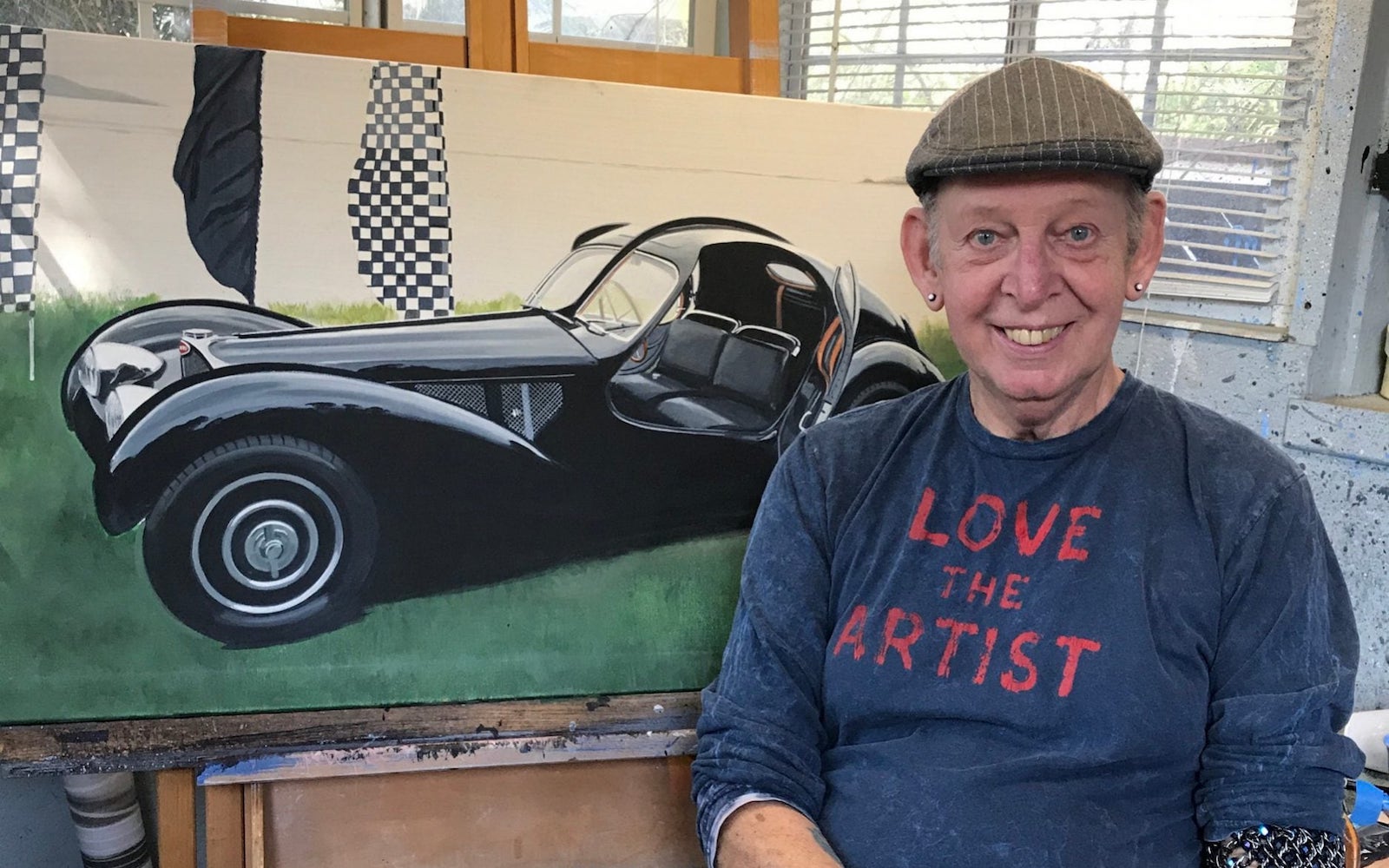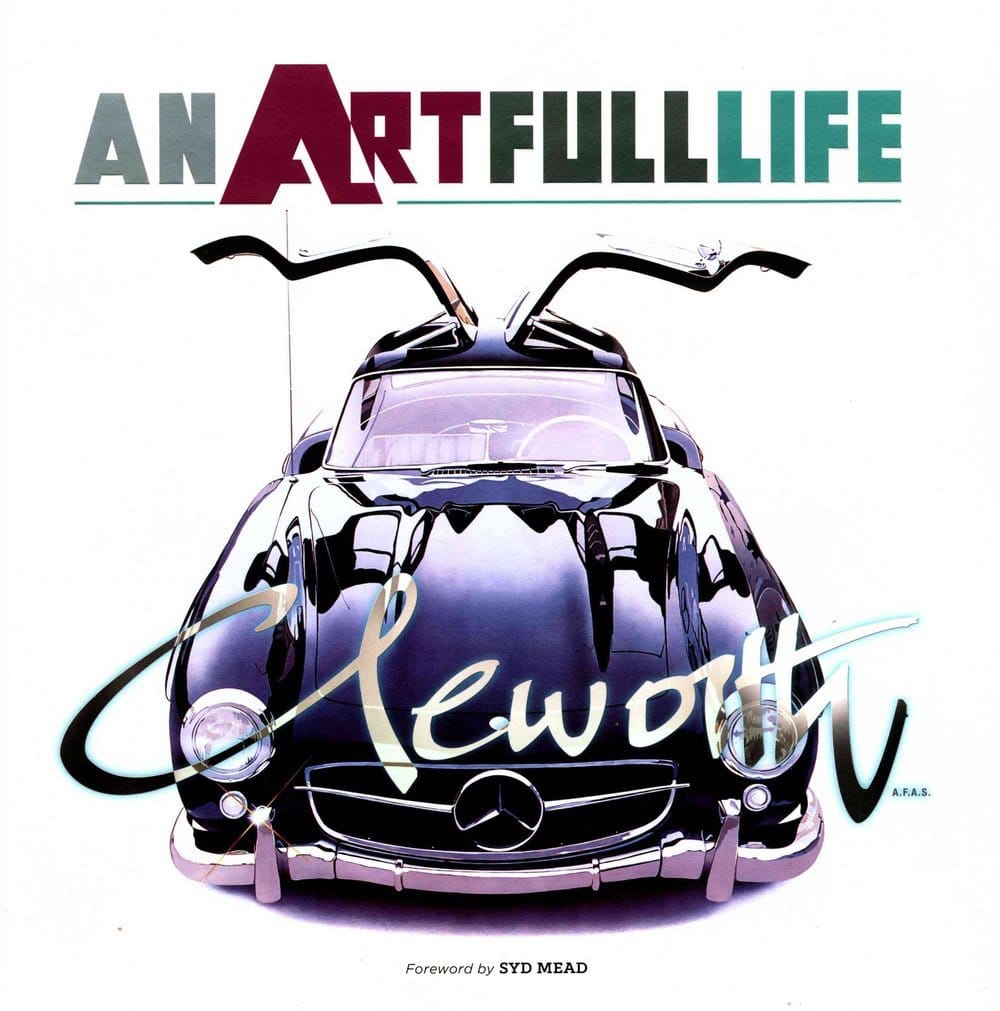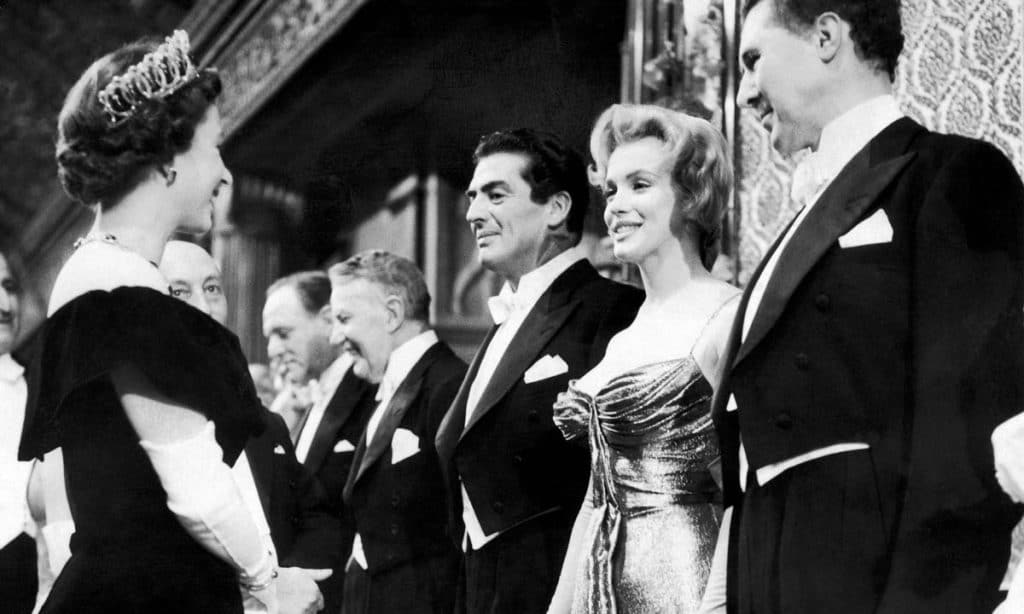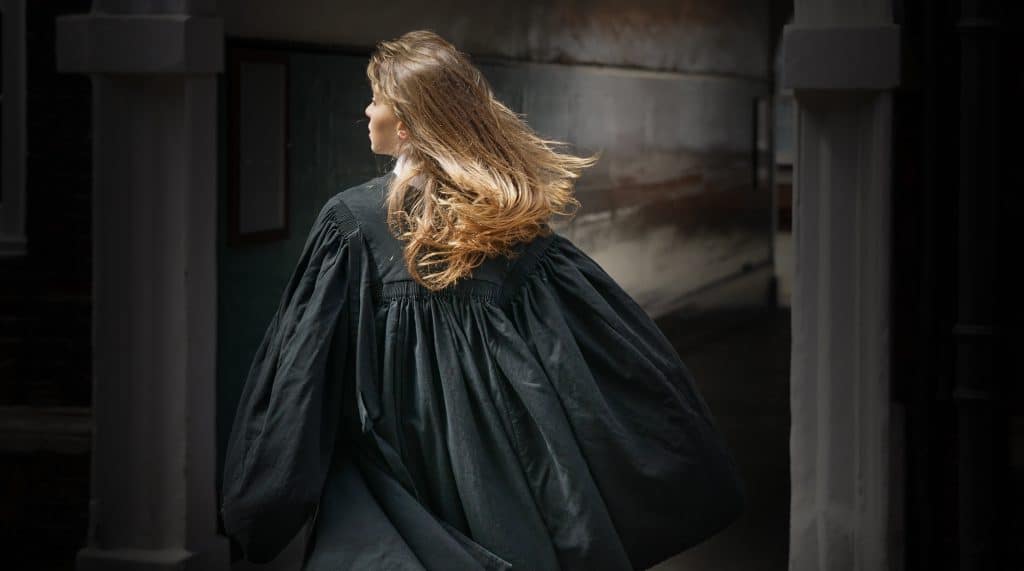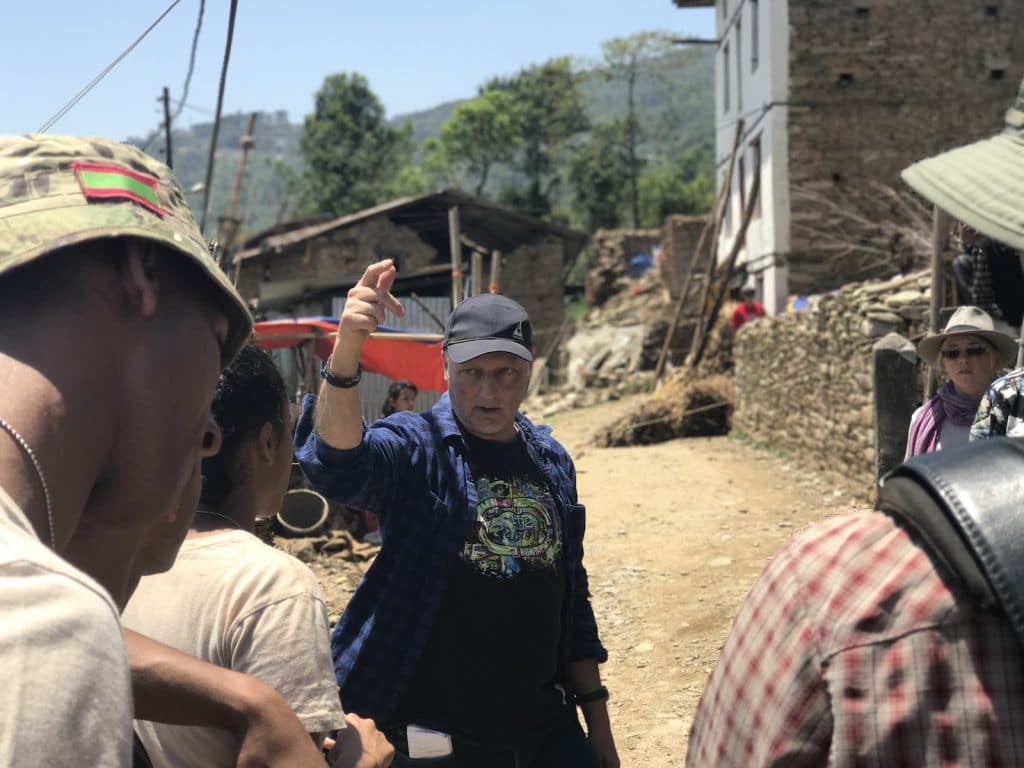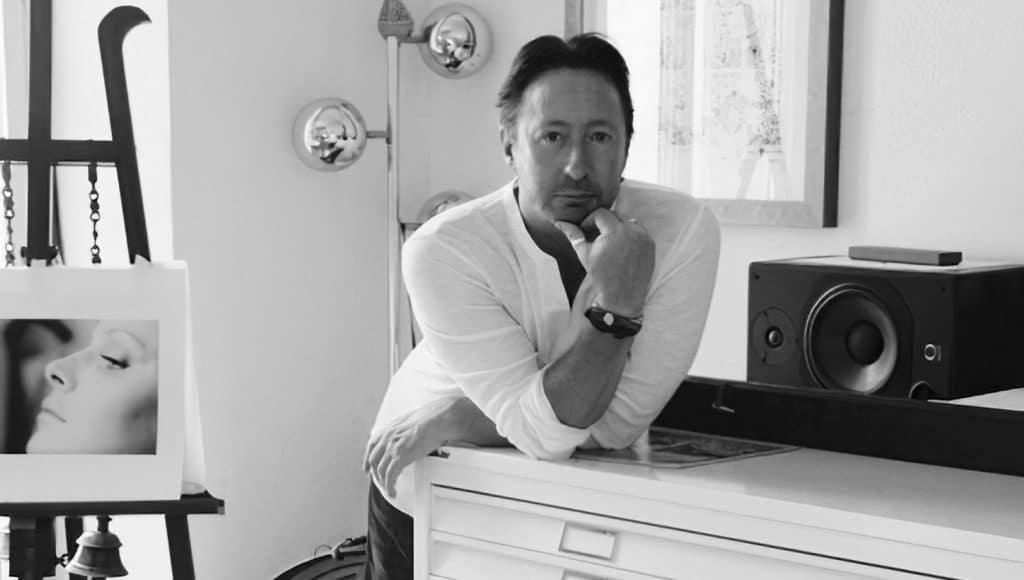Harold, you were born in the north of England, and studied graphic art at Manchester School of Art before moving to London to illustrate album covers for Decca Records. It must have been such an exciting time to be working in a record company especially during the ‘Swinging Sixties’ with so many emerging bands, designing covers for groups such as The Rolling Stones, and The Who etc. Do you have fond memories from this period in your life?
Yes, I have great memories. It was quite a time to be in London then in the 60s. It was the centre for music and fashion. I used to live on Carnaby Street, practically waiting for the new outfits to come out. Of course The Beatles were there then. An interesting story about The Beatles: I worked for Decca Records doing album covers, and I had first seen The Beatles perform in Liverpool as I lived close by. Then I moved to London and shortly afterwards, they came to Decca Records with their tapes, and guess what? They were turned down! It was obviously the biggest mistake in musical history. So they went to Columbia and the rest as they say is history. After Decca, I also worked for a magazine called Woman Own which was like a ladies home journal. I illustrated the romantic love stories that were in there and also a lot of articles on The Royal Family. I had to read all of those ghastly love stories and illustrate them. After five years that was it, I’d had enough!
In 1972 you then decided to move to San Francisco to begin your career as a fine artist, specialising in the automobile. What led you to make this permanent move to California?
Essentially, whilst living in London, I had achieved the dreams that I went there for. I did the album covers, I worked on a magazine, those were a couple of my goals after art college, so what was next? I always had this dream of painting for a living, and I must have been out of my mind as who paints for a living but I wanted to try it. Coincidentally I met a couple of guys who lived in San Francisco who came to a party of mine. I got to know them very well. In fact they stayed with me for three months, and during that time convinced me to move to San Francisco and go back with them which seemed to be the right thing to do at the time. I spent a couple of years scratching around before I decided on what I was going to paint. Although it was kind of decided for me after studying the 1950’s American car for the first time in the flesh. I was amazed! The 59 Cadillacs, they were so expressive. All the fifties stuff; some of it was appallingly bad taste but I loved it because of that I think.
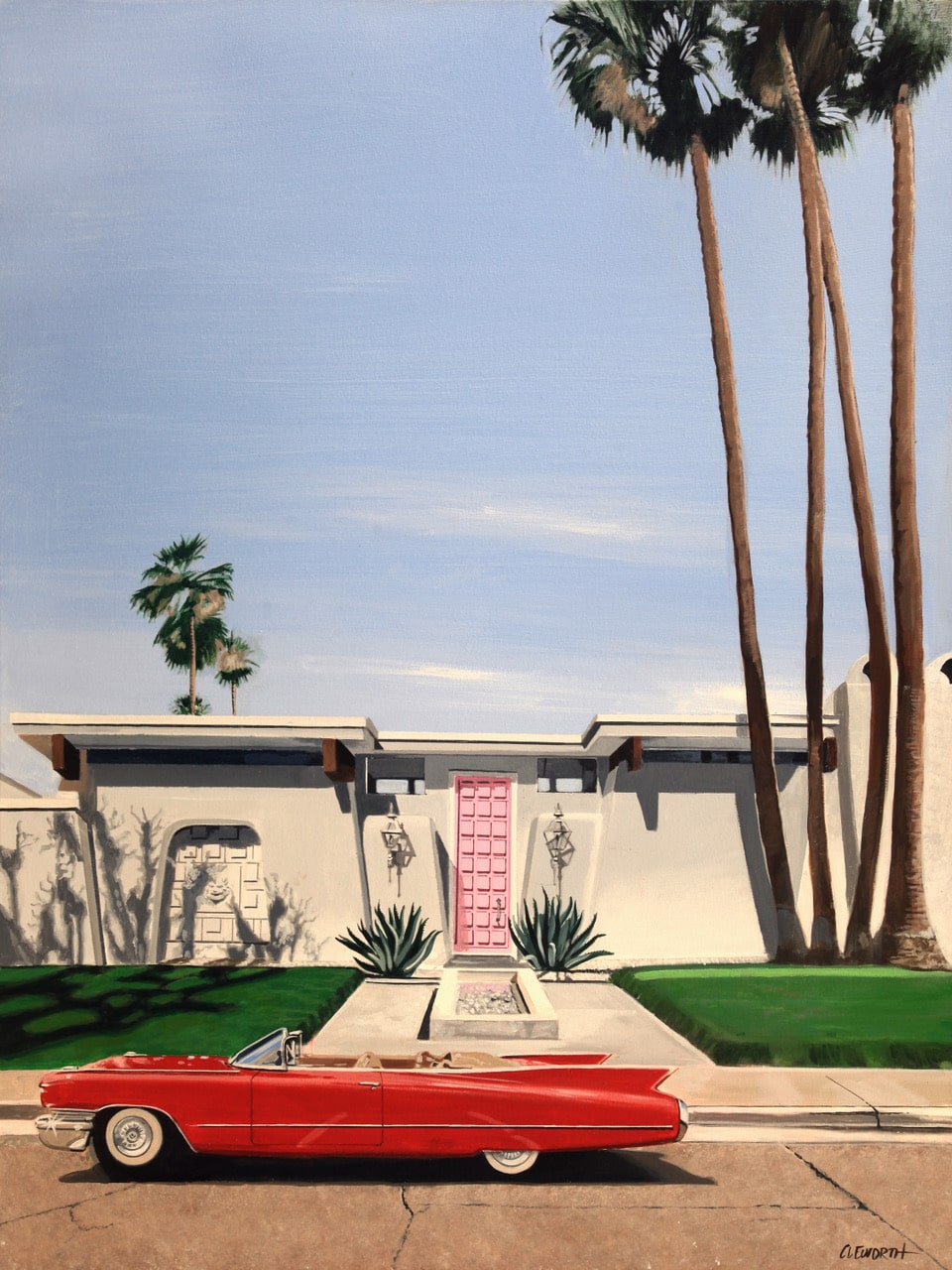
You have been described in the press as “the painter laureate of the car”; did you discover your passion for cars as a young boy growing up in England, and did this passion also extend to other forms of engineering and vehicles such as trains, motorcycles, planes and boats etc? What is it about cars that particularly fascinates you?
It came down to one man: my father. He drove a bus for fifty years and showed me the workings of an engine. He had a garage full of car parts but never actually owned a car in his married life, he had four kids instead so that’s all he could afford I think. This was the industrial north of England where cars were few and far between, and no one had any money. All were levelled by the second world war; everyone had the same – nothing more, nothing less than anyone else. I remember World War II planes coming over – at the end of World War II, I was five or six – and the noise the planes would make. If I close my eyes, I can still hear that sound to this day. I went to school on a train. The steam trains fascinated me but it was the machinery, that is what I liked so much. I remember hitchhiking to London several times to go to the Earls Court Motor Show, and I would come back with masses of pamphlets and show the new car designs to my father. And I remember in 1959 going to the show and seeing not only the good taste of the English cars, the Rolls and the Jaguars etc, but the American contingent – a silver 1959 Cadillac Eldorado Biarritz Convertible. Solid silver with a silver leather interior. It appalled England quite frankly, but I secretly fell in love with it. I had never seen anything like this in my life. It looked like something from another planet. In 1972 when I moved to San Francisco, I saw that car on the street for the first time, and it changed my life.
Many well kown private collectors regularly commission you to paint their valuable cars, everything from incredibly rare Ferraris to Bugattis to Lamborghinis etc. Is it akin to perhaps a parent commissioning an artist to paint a family portrait; is there that same sense of pride derived from owning such a beautiful car do you think?
Absolutely and in many cases, more so I think. Men go to work and then come home and go to the garage and tinker with their passion, and it’s usually a classic automobile of some kind. These are the kind of people who commission me to do paintings.
What has been the most difficult vehicle to ‘capture’ with your paint brush?
I can’t pin it down to one in terms of the most difficult as they all have their problems and challenges. Every time I start a painting, I always feel like I am starting anew. Maybe I didn’t learn from the last one. Sitting in front of an empty canvas, I am always fascinated by what is going to appear.
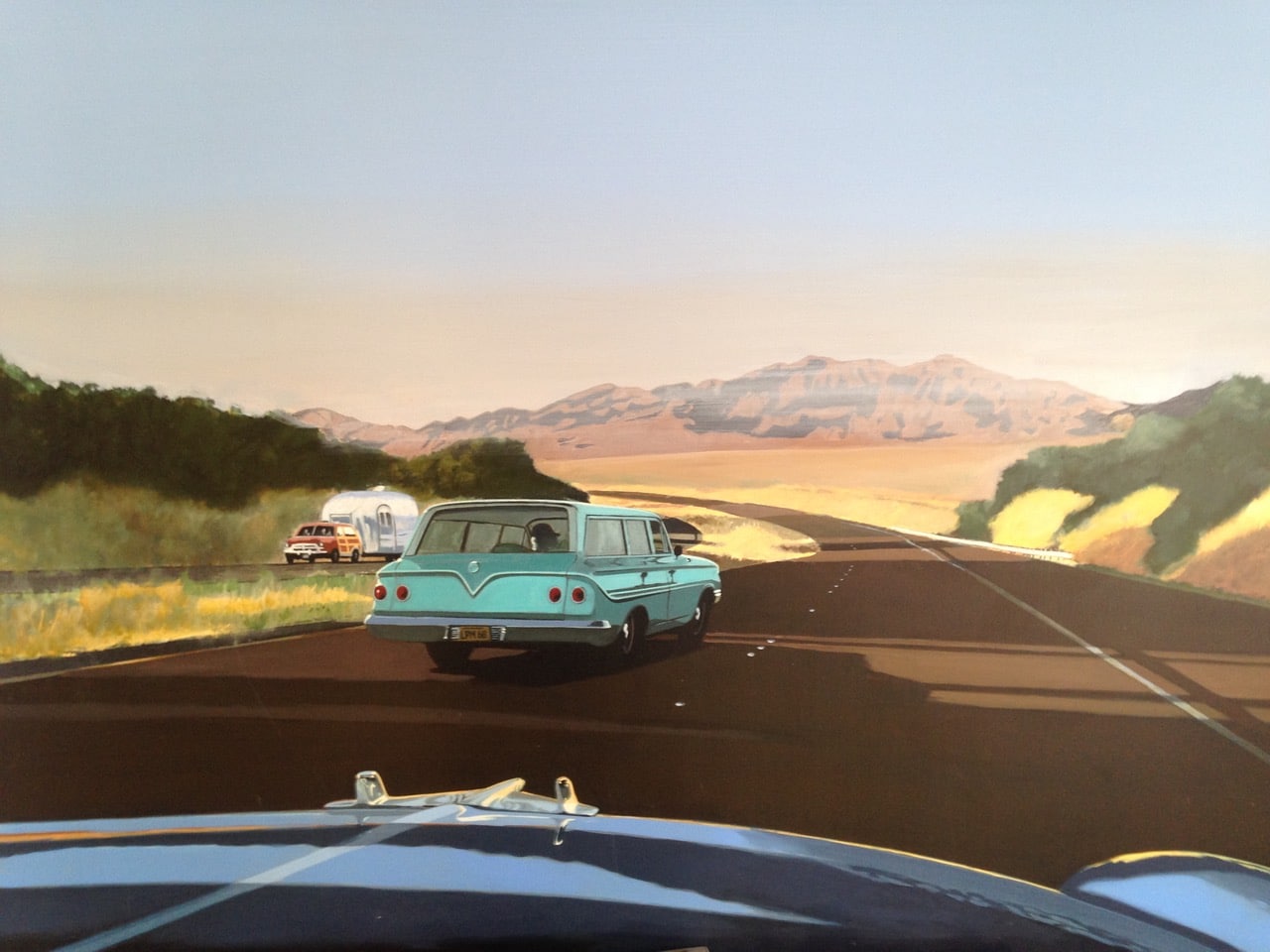
Do you have a favourite painting or one which you are most proud of?
I don’t have one favourite painting; actually I have quite a few but the ones that I think are my favourites, are the ones that I regret having sold. I sometimes look at my coffee table book and think I wish I still had that painting, but I have to sell them as that’s how I survive.
As your work has a photorealism style, what do you feel can be conveyed with paint and the masterly precision and detail of your technique, that can’t be with a photographic image?
I’m not too fond of the phrase photorealism as I consider myself a realist painter. And my camera, I would consider my sketchbook. I’m not a very good photographer; if I take a really good photograph of something, then I leave it as it is because what I am going to say with this, that I haven’t said with the camera. My best paintings have come from my worst photographs. I’m glad in a way that I am not a good photographer. I see things that would not normally be captured by a good photograph. Regarding the term photorealism, the most photo realistic painting I did of course, was the Black Gullwing Mercedes, and that was enormously successful as an image. It went viral. There were thousands of posters made. Apparently it was successful due to the fact that it looked like a photograph oddly enough. People would say to me: “that’s a photograph?”. And I would say: “no, it’s a painting” and they would be amazed by that. And that contributed a great deal to its success. But it bothered me quite frankly. If all I am doing is copying a photograph, then what am I saying as an artist? So I threw away all of my tools; I got rid of my airbrush, all the mechanical aids that I used to create that image, and just got it down to canvas (the Gullwing was done on a smooth board), brushes and paint. I wanted to show the painterly quality; I wanted to show brush strokes, canvas texture, and using a camera as I did, picking up on little areas that I photographed, whilst assembling the image. Now I’m much happier; I think my work is less realistic than what it used to be and I’m glad about that.
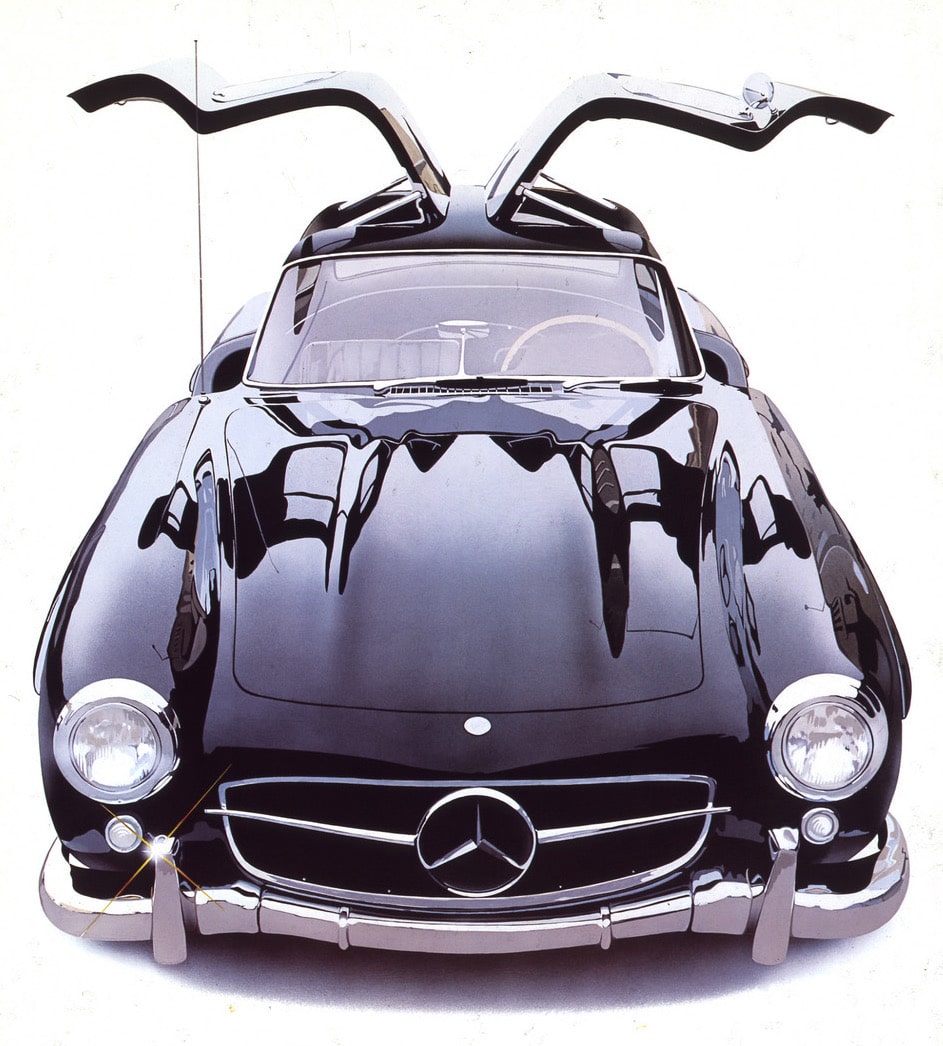
Just thinking of The Batman and other upcoming films this year, I know you have painted the Batmobile previously, but with your British heritage, have you ever worked with any of the James Bond cars, and which would be your favourite Bond car to paint? Are there any other iconic vehicles from the screen that you haven’t painted yet but would like to?
I’ve done a couple of Aston Martins but oddly enough, I haven’t painted the James Bond DB5, the one he is most famous for. One of these days hopefully I will get around to it. Maybe someone will commission me, I don’t know, we shall see! As you noted, I have painted the Batmobile but any Batmobile would be great with me, but I am particularly fond of the 1950’s one I did because underneath the skin of a Batmobile is the Lincoln Futura which is a dream car. In the film Whatever Happened to Baby Jane, Bette Davies drove a fantastic Lincoln, that would appeal to me. I also painted The Pink Panther car – absurd vehicle!
As you’re living right in the heart of the film business in LA, do film and TV production companies often contact you with commissions?
Some of my works have been chosen to be used as backdrops on the sets, for example Superman II used my Gulwing. Pulp Fiction used a poster I had done a long time ago, and ocasionally on TV shows, I will catch an image of one of my prints. In terms of being directly commissioned by the movie industry, not yet.
David Hockney is another fellow British artist and native of northern England who moved to California in search of the light. As with Hockney’s artistic evolution, do you feel that the Californian light, sunshine and vibrancy of colour have been essential components for your work?
Without question, it has been an amazing influence. I remember arriving into San Francisco and seeing colour for the first time. I always think England is in black and white and California is in glorious technicolor. I never saw blue sky before and houses painted turquoise and pink, delightful colours. A lot of English architecture is brick so I just grew up with no colour at all. So yes, it did influence me.
Is there anything that you miss about England?
My family. I have fond memories of living there, but I am also delighted that I moved here.
Syd Mead, the neo futurist concept artist known for his brilliant work on films such as Blade Runner, Aliens and Tron, wrote the glowing forward for your beautiful coffee table book: Cleworth: An Artfulllife. Was publishing a book of your work something you had always planned to do?
Yes but I had to wait until I had done enough work to fill it. I wanted to show how much I had evolved and also to include a story of my life, which has been anything but dull! Living in London then San Francisco. I lived in Haight-Ahsbury, San Francisco, where I started my career as a painter in the 70s. In fact, I lived right on Haight Street and Ashbury, literally, for almost ten years. How I am alive to talk about it I will never know! A remarkable period.
When you are not in front of the easel, how do you like to relax and recharge?
I consider my home to be my other canvas as it were. I’m a lover of interior design. I go to flea markets, garage sales, and thrift shops. My house is full of stuff that I have found that hopefully will become collectable in years to come. I seem to have an eye for what will become antiques.
And maybe an impossible question, but what is your dream car?
My dream car is the first car that I bought when I came to America. The first American car: a 1958 Imperial Crown Southampton. A magnificent huge beast of a car. Three colours, covered in chrome. I was never happier. When I moved from San Francisco to Los Angeles, I drove that beast all the way. It never let me down once. Two and a half tonnes of metal. It was so big, you could sublet the front to a small family! I loved it but sold it eventually because it was too difficult to maintain. That would be my dream car now. I want that car again!
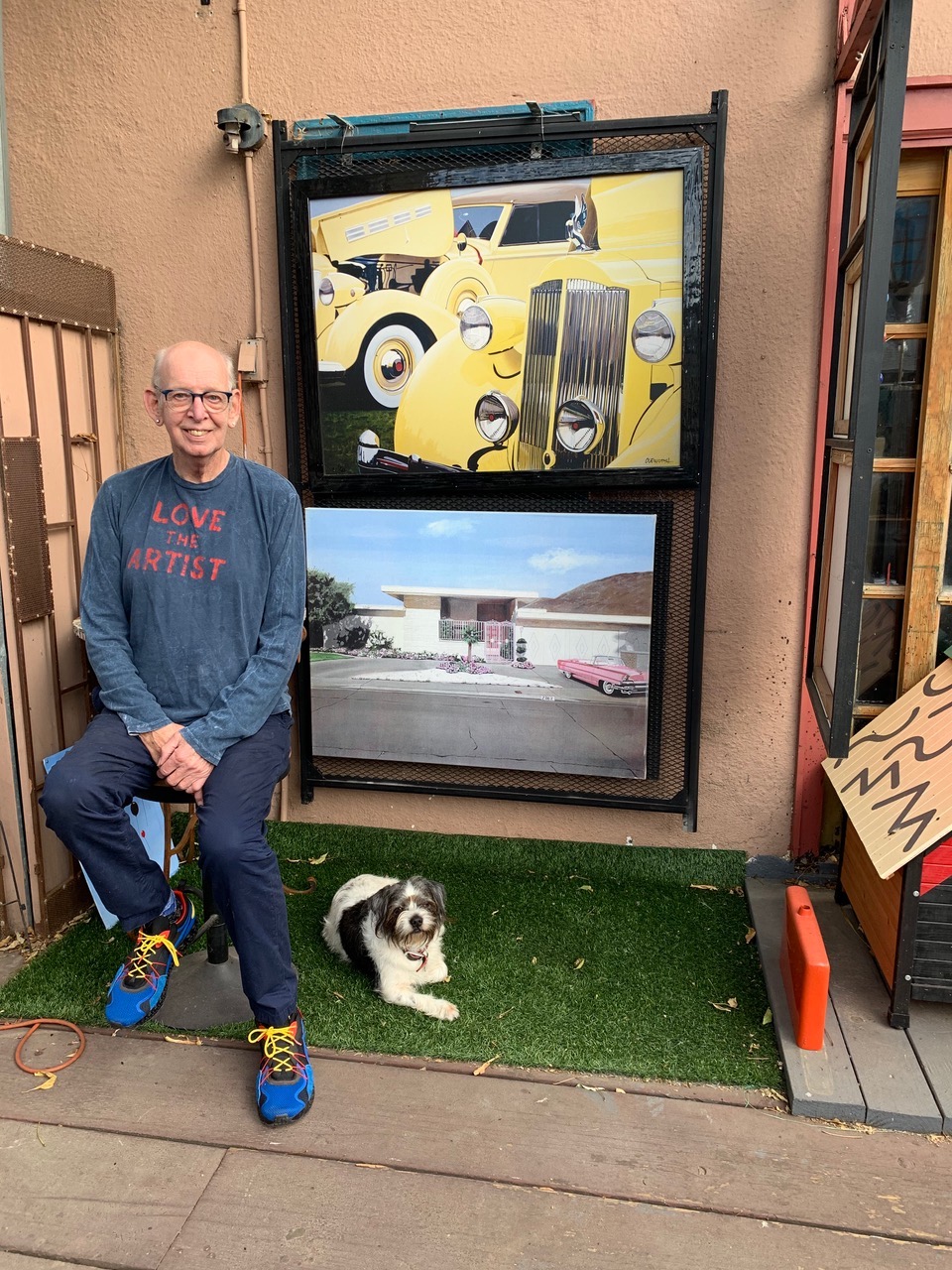
For further information on Harold’s work, please visit his official website here
To purchase a copy of Cleworth: An Artfulllife please visit here




